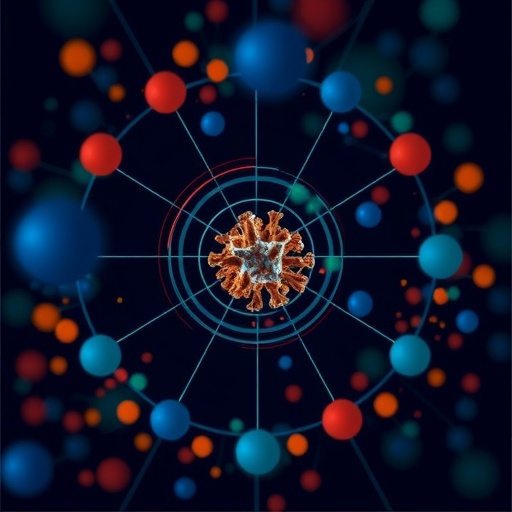In a rapidly evolving healthcare landscape, interdisciplinary collaboration has emerged as a linchpin for effectively addressing complex challenges. The confluence of diverse expertise—ranging from medical professionals to data scientists—has been indispensable in enhancing patient outcomes and refining system efficiencies. This shift toward multidisciplinary teamwork necessitates a shared understanding among team members, creating a common framework upon which they can build their collaborative efforts.
A new framework has been introduced by researchers Satcher, Dees, and Johnston, which focuses on visualized shared mental modeling to facilitate communication and understanding within diverse healthcare teams. This approach is pivotal, particularly in scenarios where varied professional backgrounds can lead to misinterpretations or conflicting understandings of problems at hand. Visual tools that articulate shared mental models can significantly enhance the clarity of communication, ultimately leading to cooperative problem-solving.
The research highlights the importance of structured methodologies in fostering a more cohesive team dynamic. By employing visual representations, the framework addresses fundamental barriers to communication that often impede collaborative efforts in healthcare settings. The authors argue that utilizing a common visual language mitigates misunderstandings, aligning team members’ perceptions and contributing to unified decision-making processes.
Utilizing models that clarify complex information allows teams to visualize multifaceted problems in healthcare, from patient flow dynamics to resource allocation strategies. The study elucidates how a shared visual landscape can guide the exploration of intricate healthcare scenarios, serving both as a diagnosis and a roadmap to navigate complications. By creating visual analogs of real-life situations, teams can articulate their perspectives, thereby fostering a robust environment for dialogue and exchange.
Practically, this tailored framework can be particularly transformative in high-stakes environments such as emergency departments, where rapid decisions are crucial. When under pressure, the ability to quickly grasp the full scope of a situation can avert critical errors. The researchers emphasize that visualized shared mental modeling is more than just a communication tool; it acts as a cognitive scaffold that supports team functioning in real-time.
Differentiating between various types of models is essential, as each type has unique applications in solving specific problems. Process-driven models, for instance, can help outline the steps needed for addressing patient readmissions, while resource allocation models can assist in optimizing staff assignments based on patient acuity. This tailored approach to modeling underscores the flexibility inherent in the proposed framework, catering to the unique requirements of diverse healthcare challenges.
Critical to the success of visualized shared mental modeling is training and integration within existing workflows. The authors advocate for structured training sessions where team members can familiarize themselves with these models, thereby ensuring a smoother implementation. Resistance to change is a common barrier in many organizations; thus, proper orientation about the advantages of this approach is crucial to motivate teams to adopt these methods proactively.
Another significant aspect of this research is its potential for fostering an equitable team environment. When every team member can contribute to and visualize the same model, it levels the playing field. Healthcare professionals, regardless of their discipline, can engage with the material meaningfully, promoting a culture of inclusivity. This inclusivity not only enhances the team dynamic but also leads to a richer array of insights during discussions.
The role of technology in this framework cannot be overlooked. Digital platforms and tools that facilitate the construction and visualization of these shared mental models offer invaluable resources for teams. With the integration of cloud-based systems, members can collaboratively engage with these visualizations in real time, regardless of their geographical locations. This flexibility is particularly advantageous as healthcare teams increasingly adopt remote and hybrid working models.
Feedback loops are integral to refining these shared mental models further. Researchers suggest incorporating iterative practices whereby teams regularly review and update their models based on experiences and outcomes. This reflective practice can cultivate a culture of continuous improvement, ensuring that models remain relevant and useful amidst the ever-changing healthcare scenarios that teams encounter.
Ultimately, the implications of visualized shared mental modeling extend beyond immediate team settings. The potential for broader organizational impact is substantial, particularly in emergency preparedness and public health responses. By employing these models to visualize potential crisis scenarios, healthcare teams can enhance their preparedness, ensuring a more rapid and effective response to public health emergencies.
In conclusion, this groundbreaking framework presents an adaptable, effective solution for the complexities of interdisciplinary collaboration in healthcare. Visualized shared mental modeling empowers healthcare professionals to transcend disciplinary divides, creating pathways for clear communication and unified action. As organizations seek to enhance team dynamics and improve health outcomes, this research offers a promising avenue for innovation and growth.
Equipped with a clearer, shared understanding, healthcare teams are better positioned to tackle the multifaceted nature of health challenges, improving care delivery in ways that were previously unattainable.
Subject of Research: Visualized shared mental modeling for interdisciplinary teams in healthcare
Article Title: Visualized shared mental modeling: an adapted practical framework for interdisciplinary teams solving complex problems in healthcare
Article References:
Satcher, M., Dees, A., Johnston, J. et al. Visualized shared mental modeling: an adapted practical framework for interdisciplinary teams solving complex problems in healthcare.
BMC Health Serv Res 25, 1467 (2025). https://doi.org/10.1186/s12913-025-13588-7
Image Credits: AI Generated
DOI: https://doi.org/10.1186/s12913-025-13588-7
Keywords: Healthcare, interdisciplinary collaboration, shared mental modeling, visual communication, team dynamics, complex problem-solving.
Tags: decision-making processes in healthcare teamseffective communication strategies in healthcareenhancing patient outcomes through teamworkimproving healthcare team dynamicsinterdisciplinary teamwork in medical settingsmitigating misunderstandings in medical teamsmultidisciplinary approaches to healthcare challengesshared mental models in healthcare teamsstructured methodologies in healthcare collaborationteam collaboration in healthcarevisual frameworks for healthcare communicationvisual representation of complex healthcare problems





